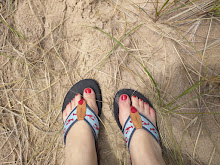 Danielle and Rod live in the Capital City of Lansing, MI. Here is a picture of us (hard to see us, but we're there!) in front of the lit capitol dome. Isn't it funny how the city is spelled capital and the building itself is spelled capitol? Either way, there is an interesting story behind the capitals and capitol buildings of the State of Michigan.
Danielle and Rod live in the Capital City of Lansing, MI. Here is a picture of us (hard to see us, but we're there!) in front of the lit capitol dome. Isn't it funny how the city is spelled capital and the building itself is spelled capitol? Either way, there is an interesting story behind the capitals and capitol buildings of the State of Michigan.Lansing was not Michigan’s original capital city. French fur traders and
missionaries traveled the upper Great Lakes as early as the 1660s. In 1668, the Jesuit
mission at Sault Ste. Marie became the first permanent European settlement in what is now
Michigan. When Detroit was founded in 1701, it quickly became the most important
settlement in the western Great Lakes region.
In 1787, after more than a century of French and British rule, the Michigan region was set aside by the United States government as part of the Northwest Territory. The Territory of Michigan itself was created in 1805, with General William Hull serving as its first governor. On July 1, 1805, Detroit was named the capital of the new territory. Michigan was admitted to the Union in 1837, with Detroit selected as its first capital city. A territorial courthouse was pressed into service as the first capitol
building. Michigan’s first constitution, however, carried a provision: Detroit would remain the capital only until 1847, “when it shall be permanently located by the Legislature.” This unleashed a firestorm of debate as each legislator vied for the honor of locating the capital in his district.
With many cities promoted and opposed, James Seymour, a speculator who owned land in Ingham County, drew attention to Lansing Township. On March 16, 1847, after months of debate, the governor signed a law naming Lansing Township in Ingham County as the new state capital. Horrified observers, noting that not even a village existed at the location, called it a “howling wilderness.” There was no time to waste. The legislature had to convene in its new “wilderness” capital by January 1848. So, in late 1847, a wooden structure was hastily thrown up to serve as a temporary capitol building. Soon a small settlement began to grow up around it. At first called “Michigan, Michigan,” this confusing name was changed a few months later to “Lansing.” Although it has served as Michigan’s capital since 1847, Lansing was not incorporated as a city until 1859.
Michigan’s second, “temporary” capitol was inadequate from the start, but any thought of a grander building had to wait until the end of the Civil War (1861-1865). Although a 16-foot addition was added in 1865, it was not until 1871 that Governor Henry Baldwin called for a
larger, fireproof, and more dignified seat of state government. The legislature agreed.
A board of building commissioners was quickly named and a nationwide contest announced to select an architect to design the new capitol, with only $1,200,000 allowed for its construction. In January 1872, the winner was announced. A plan named “Tuebor” (meaning, “I will defend”) had been chosen. It was submitted by architect Elijah E. Myers of Springfield, Illinois.
Although the millions of bricks used for walls and ceilings were made in Lansing, building materials for the new capitol came from all over the country and even from abroad. Exterior stone came from Ohio, cast iron for the dome and floor beams from Pennsylvania, marble
and limestone for the floors from Vermont, and tin for the roof from Wales. No preference was given to Michigan materials. Rather, the best materials were selected for the best price, no matter where they came from. The final cost of $1,427,738.78 was considered
quite modest for the construction of a state capitol at the time. Construction began in 1872. When the cornerstone was laid on October 2, 1873, the ceremony rivaled anything Lansing had ever seen. Residents opened their homes as people from all over the state thronged the city.The building’s style, incorporating motifs from classical Greek and Roman architecture, is often termed Renaissance Revival or Neoclassical. Columns in the classical orders—Doric, Ionic and Corinthian—grace the exterior and interior. A four-story entrance pavilion is flanked by balanced wings housing the legislative chambers, and high above it all floats a distinctive, graceful cast iron dome.
Michigan’s third capitol was dedicated on January 1, 1879.













